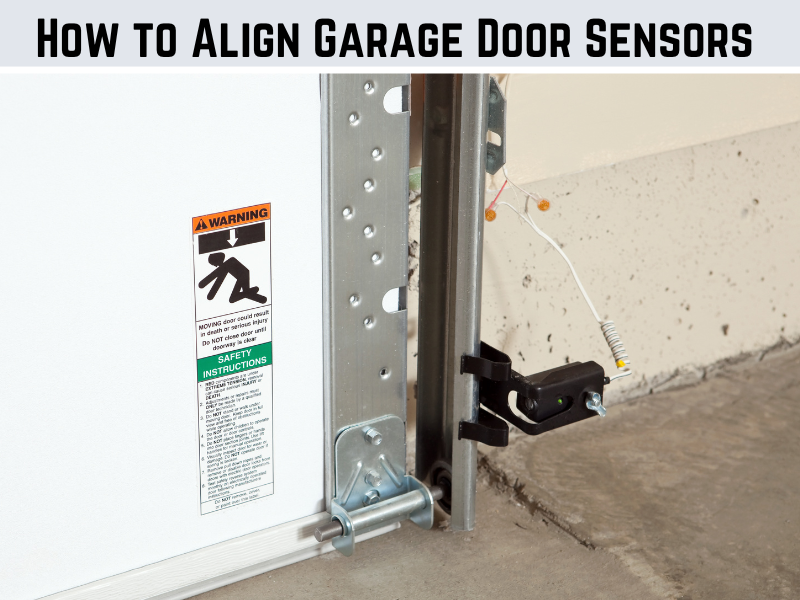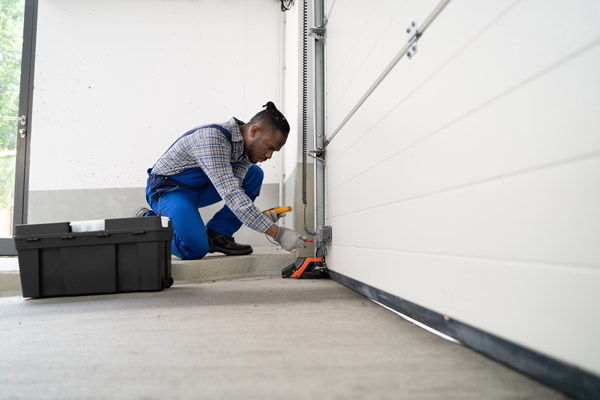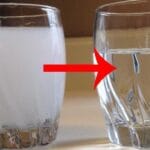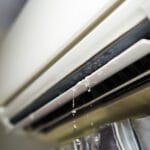To align garage door sensors, ensure they face each other and are at the same height. Adjust until their lights indicate a secure connection.
Aligning garage door sensors is a crucial step in ensuring your garage door operates safely and efficiently. Misaligned sensors can cause the door to malfunction, posing a risk to your safety and security. These sensors are an integral part of the garage door system, designed to prevent the door from closing on objects, pets, or people.
The alignment process is straightforward and does not require professional help, making it a perfect DIY task for homeowners. By following a simple set of instructions, you can quickly align your garage door sensors and restore the full functionality of your garage door. This task not only contributes to the safe operation of your garage door but also extends the life of the door mechanism by preventing unnecessary strain and damage.
Introduction To Garage Door Sensors
Garage door sensors play a crucial role in home safety. These small devices ensure that your garage door operates correctly and safely. They are located near the floor on either side of the garage door. Sensors prevent the door from closing if an object or person is in the way. Understanding how to align these sensors is key to maintaining garage door functionality.
Importance Of Proper Sensor Alignment
Proper sensor alignment is essential for garage door safety. Sensors must align perfectly to communicate effectively. This alignment allows sensors to detect any obstruction. When aligned, sensors contribute to the safe operation of your garage door, providing peace of mind.
Common Issues With Misaligned Sensors
- Garage door reverses before hitting the floor.
- Door does not close and light blinks.
- Sensors flash when no obstruction is present.
Misaligned sensors lead to these common issues. They can cause frustration and compromise safety. Regular maintenance helps prevent misalignment and ensures proper operation.

Credit: www.wikihow.com
Types Of Garage Door Sensors
Garage door sensors are crucial for safety. They help prevent accidents. There are main types to know about.
Photo Eye Sensors
Photo eye sensors use light beams. They detect objects in the door’s path. When the beam breaks, the door stops.
- Infrared technology is common.
- They must align perfectly.
- Dirty lenses can cause issues.
Pressure Sensors
Pressure sensors react to force. They are located on the garage door itself. When something presses against the door, it reverses.
| Sensor Type | Location | Function |
|---|---|---|
| Photo Eye | Side Rails | Beam Interruption |
| Pressure | Bottom Edge | Force Detection |
Tools Needed For Sensor Alignment
Before you start aligning your garage door sensors, gather the right tools. Proper tools ensure a smooth and safe alignment process. Let’s talk about the tools you will need for this task.
Screwdriver And Wrench Set
A screwdriver set is essential for adjusting sensor brackets. You might need both flathead and Phillips head types. A wrench set helps tighten or loosen nuts and bolts. Make sure you have a variety of sizes.
- Flathead screwdriver: Loosens sensor screws
- Phillips head screwdriver: Tightens sensor screws
- Adjustable wrench: Works on different bolt sizes
- Socket wrench set: Provides leverage for turning bolts
Measuring Tape And Level
For precise alignment, a measuring tape helps ensure sensors are at equal heights. A level confirms that sensors are perfectly horizontal. This guarantees accurate communication between the sensors.
| Tool | Use |
|---|---|
| Measuring Tape | Checks sensor height |
| Level | Ensures sensors are straight |
Steps For Aligning Sensors
Garage door sensors ensure the door closes and opens safely. Misaligned sensors can cause the door to stop working properly. This guide will show you how to align garage door sensors correctly.
Identifying Sensor Misalignment
First, check if the sensors are the issue. Look for these signs:
- Flashing lights on the sensors.
- The door refuses to close or reverses before hitting the ground.
- Sensors not facing each other directly.
Adjusting The Sensor Brackets
Follow these steps to adjust the sensors:
- Loosen the screws on the sensor bracket. Do not remove them.
- Gently pivot the sensor. Aim it directly at the opposite sensor.
- Use a level to ensure both sensors are at the same height.
- Tighten the screws. Make sure not to move the sensors.
- Check the sensor lights. Both should glow steadily if aligned.
If the sensors are now aligned, your garage door should operate smoothly. Test the door to confirm. If issues persist, repeat the steps or consider professional help.
Troubleshooting Tips
Having trouble with your garage door sensors? You’re not alone. Many people face issues with their garage door sensors not aligning properly. This can cause the garage door to not close correctly or even to stop working altogether. Here are some troubleshooting tips to help you fix those pesky sensor issues.
Dealing With Wiring Issues
Wiring problems can cause sensor misalignment. Follow these steps:
- Turn off the power to the sensors at the circuit breaker.
- Check the wires for any visible damage. Look for cuts or nicks.
- If you find damaged wires, replace them.
- Ensure all wire connections are tight and secure.
- Turn the power back on and test the sensors.
If wiring is not the issue, proceed to the next step.
What To Do When Sensors Fail To Sync
Sometimes, sensors don’t sync. Try these steps:
- Ensure nothing blocks the sensors. Even small objects can cause issues.
- Clean the sensor lenses with a soft cloth. Dust can prevent syncing.
- Adjust the sensors. They should point directly at each other.
- Check for blinking lights on the sensors. This indicates misalignment.
- Manually align the sensors until the blinking stops.
These tips should help solve most sensor alignment problems. Remember, safety first. Always turn off the power before working on the sensors.
Safety Precautions
Before aligning garage door sensors, focus on safety. This guide ensures a secure process. Follow each step to avoid accidents.
Turning Off Power Supply
Always switch off the power before starting. This prevents electric shocks. Use the circuit breaker or unplug the garage door opener.
Avoiding Common Hazards
- Wear protective gloves and eyewear.
- Keep tools and sensors away from children.
- Secure ladders firmly to prevent falls.
- Do not touch sensor lenses with bare fingers.
- Clear the area of any water or spills.
Testing Sensor Alignment
Properly aligned garage door sensors ensure smooth operation and safety. Testing sensor alignment is crucial. Let’s explore simple tests you can perform.
Performing The Paper Test
To check sensor alignment, a paper test works well. Slide a sheet of paper between the sensors. A correctly aligned sensor won’t detect the paper. This indicates the sensors see each other without obstruction.
- Turn off the garage door opener.
- Place a paper sheet between the sensors.
- If the door tries to close, realign the sensors.
Checking The Green Light Indicator
Each sensor has a green light. This light shows proper alignment. A flickering or off light suggests misalignment.
- Locate the green light on each sensor.
- Notice a steady green light for correct alignment.
- Adjust sensors until both lights are steady.

Credit: www.doordoctor.com
Maintenance Of Garage Door Sensors
Proper maintenance of garage door sensors is crucial. It ensures safety and functionality. A misaligned sensor can cause the door to stop or reverse. This guide helps keep your sensors in top shape.
Cleaning The Sensors
Clean sensors work best. Follow these steps:
- Turn off the power to the garage door.
- Use a soft cloth and mild cleaner.
- Gently wipe each sensor’s lens.
- Avoid harsh chemicals or abrasives.
- Ensure no debris blocks the sensors.
Regular Check-up Schedule
Set a regular schedule for check-ups. Include these points:
- Inspect sensors for damage or wear.
- Test the door’s automatic reverse feature.
- Adjust sensors if the door doesn’t close properly.
- Check for loose wires or connections.
- Seek professional help for complex issues.
Maintain sensors to prevent accidents and ensure smooth operation.
When To Call A Professional
DIY fixes work for some garage door sensor problems. Yet, certain situations need expert hands. Know when it’s time to call a professional. They tackle complex issues safely and efficiently.
Complex Electrical Issues
Some sensor problems stem from electrical faults. These issues are not for amateurs. Professionals handle them with care. They have the right tools and experience. Your safety matters. Don’t risk it with electricity.
Upgrading Sensor Technology
Modern sensors offer better safety and convenience. Upgrading is wise but tricky. Pros ensure compatibility and optimal performance. They set up the latest technology correctly. Trust them for a seamless transition.

Credit: www.danleys.com
Frequently Asked Questions
Why Do Garage Door Sensors Need Aligning?
Garage door sensors can become misaligned due to accidental bumps or vibration, causing the door to malfunction or not close properly.
What Tools Are Required For Sensor Alignment?
Typically, a screwdriver and a tape measure are the essential tools needed to adjust and align garage door sensors.
How Do I Know If Sensors Are Misaligned?
If your garage door reverses before closing or the sensor lights blink, it’s a sign that the sensors might be misaligned.
Can I Align Garage Door Sensors Myself?
Yes, homeowners can align their garage door sensors by loosening the brackets and adjusting them until the indicator lights are steady.
What Are The Steps To Align Sensors Correctly?
To align the sensors, loosen their mounting brackets, align them at the same height, and angle them towards each other until the lights are solid.
Conclusion
Aligning your garage door sensors is a straightforward task that can enhance safety and functionality. With the right tools and a bit of patience, you can ensure your garage operates smoothly. Remember, regular maintenance keeps your system in top condition.
Now that you’re equipped with knowledge, tackle those misaligned sensors with confidence!




